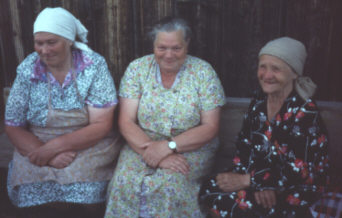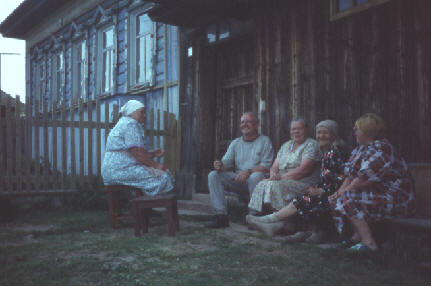|
Since the mid-18th century,
the Russians also settled areas which were originally the home of the
small people of the Mansi. This people was largely assimilated; even toward
the end of the 19th century, many Mansis no longer spoke their own language.
At the same, observers noted that that the Mansis no longer differed at
all from the Russians in their way of building houses, in their forms
of economy, or their way of dressing. Only the Losva-Mansi, who lived
in the area of Werkhoturye, followed the traditions of their ethnic origin.
Toward the begin of the 20th century, they moved further north to the
northern Sosva; their descendents still live there at present. In 1989,
there were only 8,300 Mansis in the entire Soviet Union. .
In the 18th century, the Mari formed two large territorial
groups which lived on the banks of the Sylva and the Ufa. These groups
were largely influenced by the Bashkirs and Tatars; there was hardly any
influence from Russian culture, although the Russian language was used
as a trade language among the Mari.
The Bashkirs, who were far more numerous and populated
more land, also exerted an heavy influence upon the Udmurts. A petition
of the Udmurts to the Tsar from 1812 shows that the Bashkir continuously
tried to take over traditional Udmurt lands. Relations to the Russians,
who began to settle on Udmurt territory beginning in the 19th century,
was full of deep mistrust.
The territories in the south of the Ural mountains
belonged to the Turkish people of the Bashkirs, who rented a part of their
lands to the immigrating Tatars, Udmurts, Maris, and Meshtsheryaks. One
can assume that the Bashkirs exerted a strong cultural, linguistic and
economic influence upon all of the peoples; finally, a part of the Tatars
even called themselves Bashkirian Tatars. The practice of tenant-farming
on Bashkir territory led to a multi-ethnic community which was called
the Tepteri. In the censi of the 19th century, up to 1909, they were treated
as an independant people; in 1857-58, 8,712 Tepteri were counted. Today,
one tends to consider the Tepteri as a specific social group of heterogenous
ethnic origin which might be compared to the Cossacks. In any case, the
"teptyary" (as they called themselves) in the Southern Ural certainly
had a well-developed sense of identity.
According to some traditions, the Meshtsheyaks originate
on the Crimean Peninsula while other sources claim that they are descended
from the Finno-Ugric people of the Metshera. Like the Bashkirs, they too
are Muslim and are closely related in their language as well as in their
way of life. In 1870, there were 1,820 Meshtsheryaks. Apparently, they
were later assimilated by the Bashkirs.
Marion Krause
|

